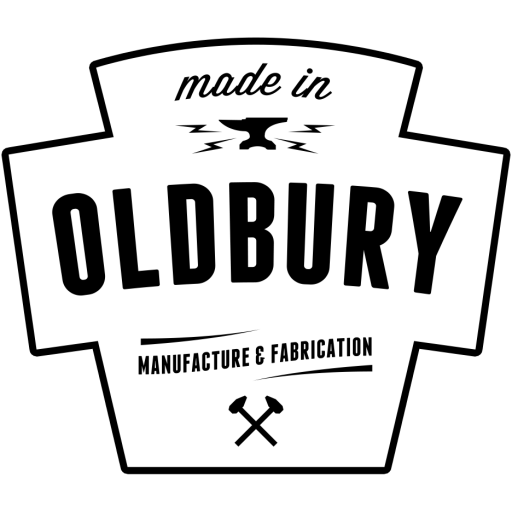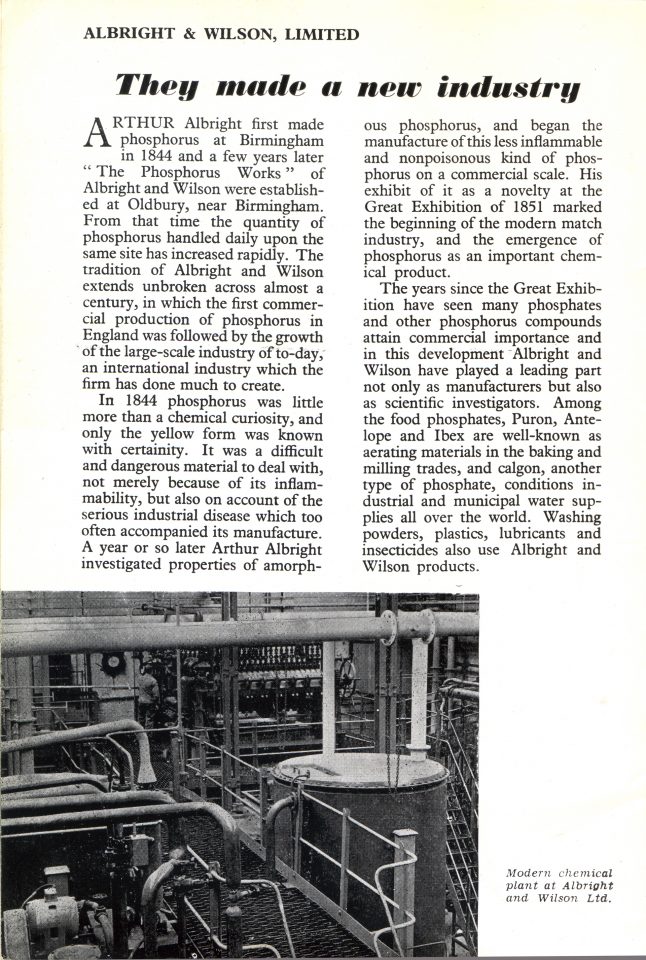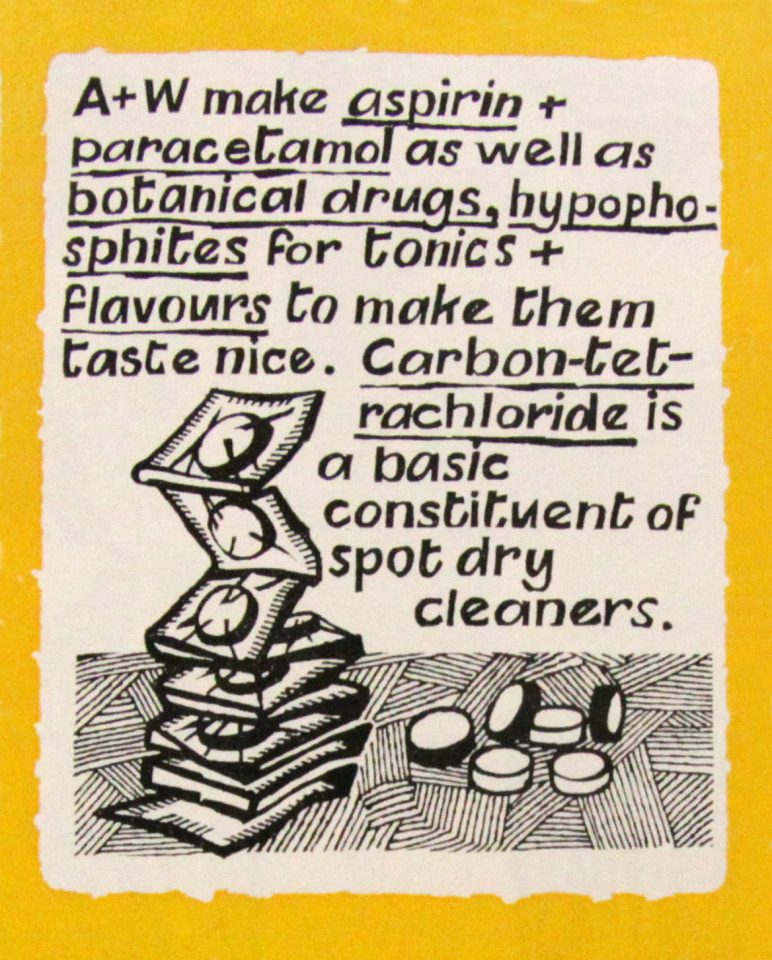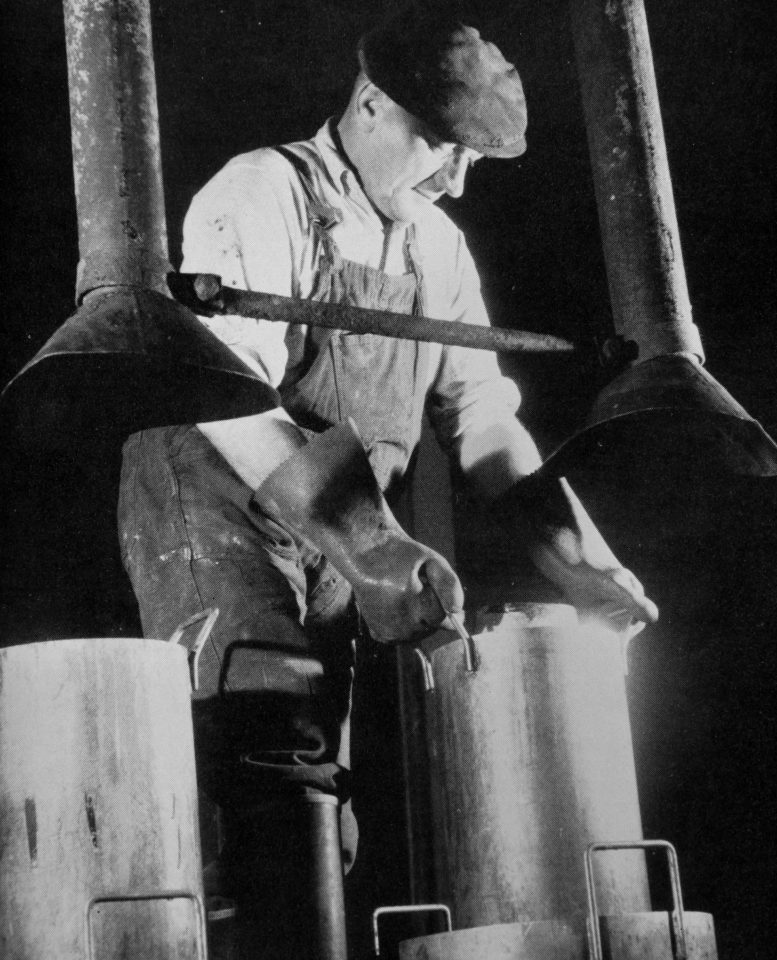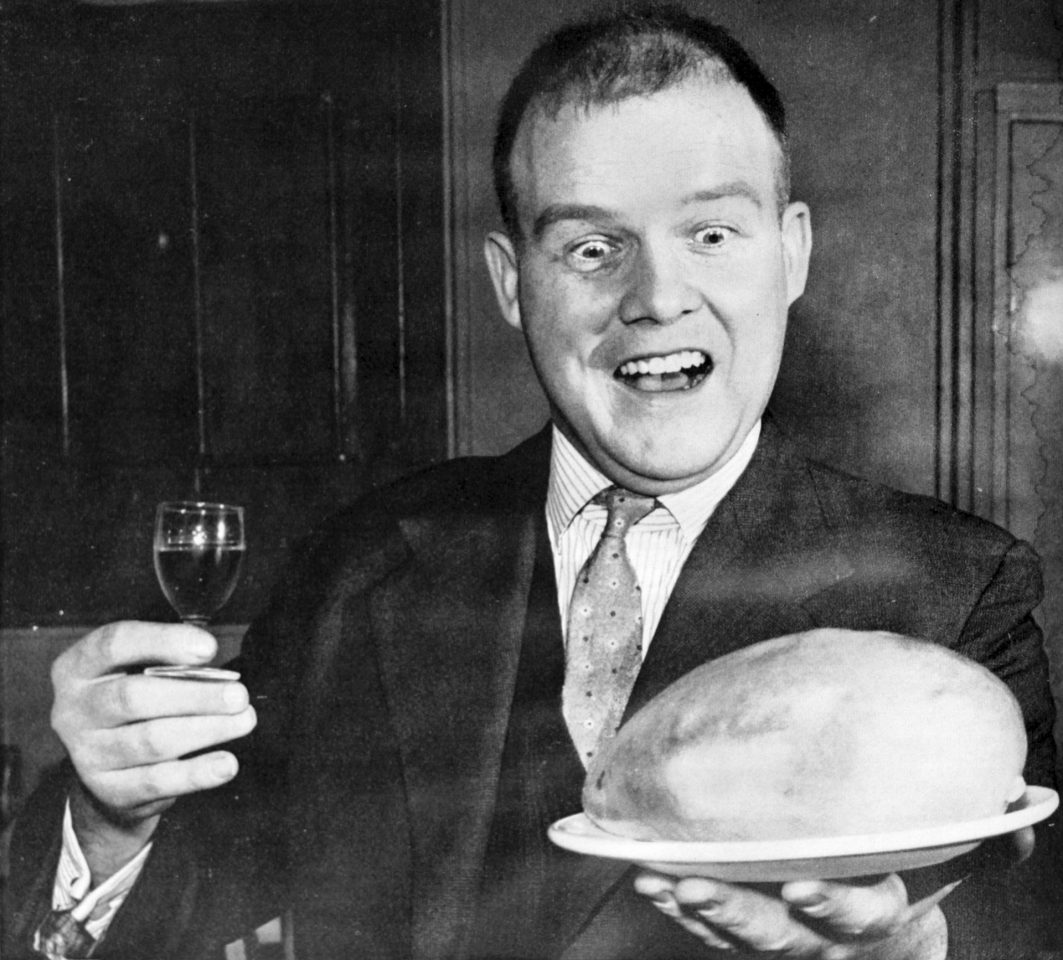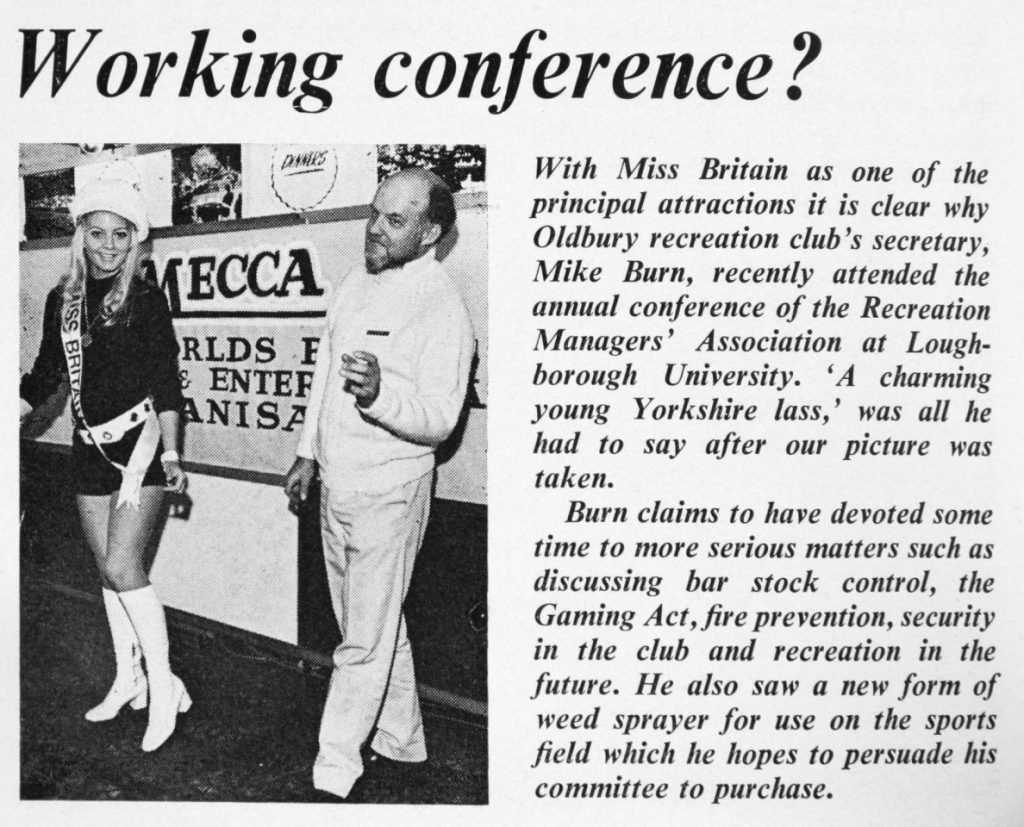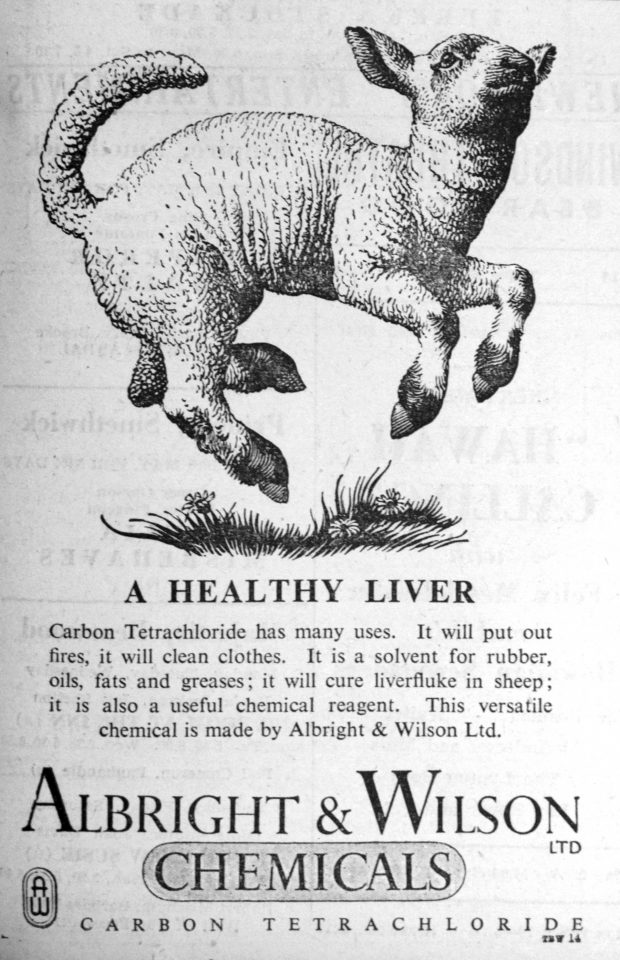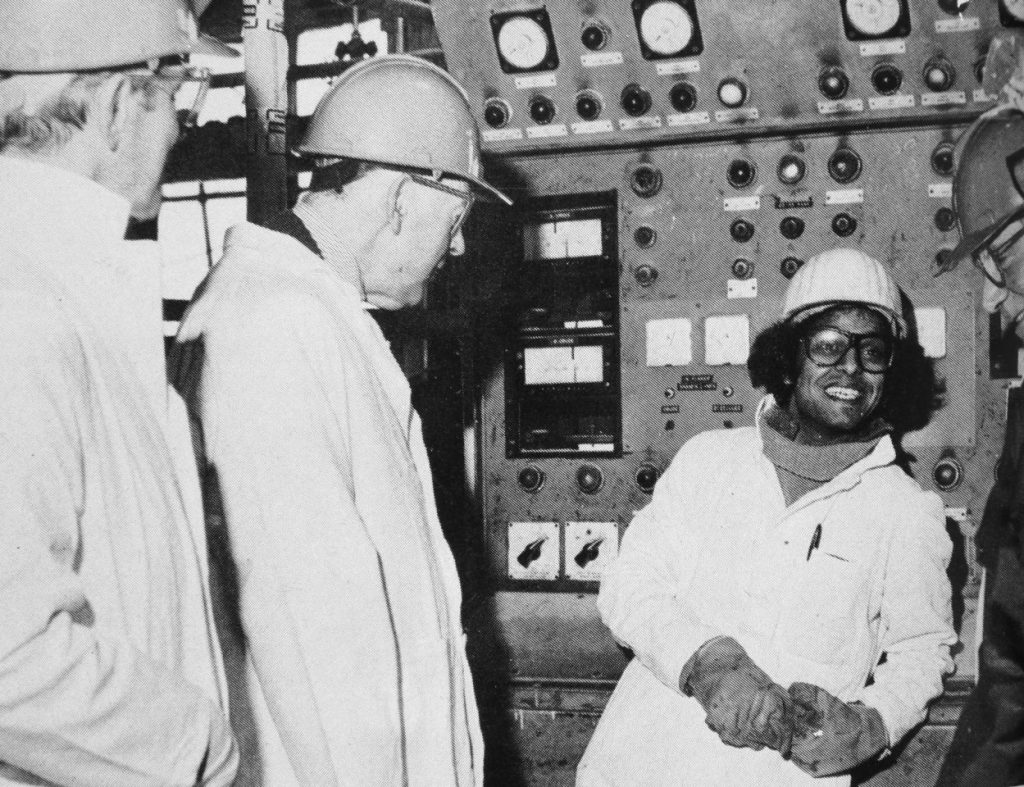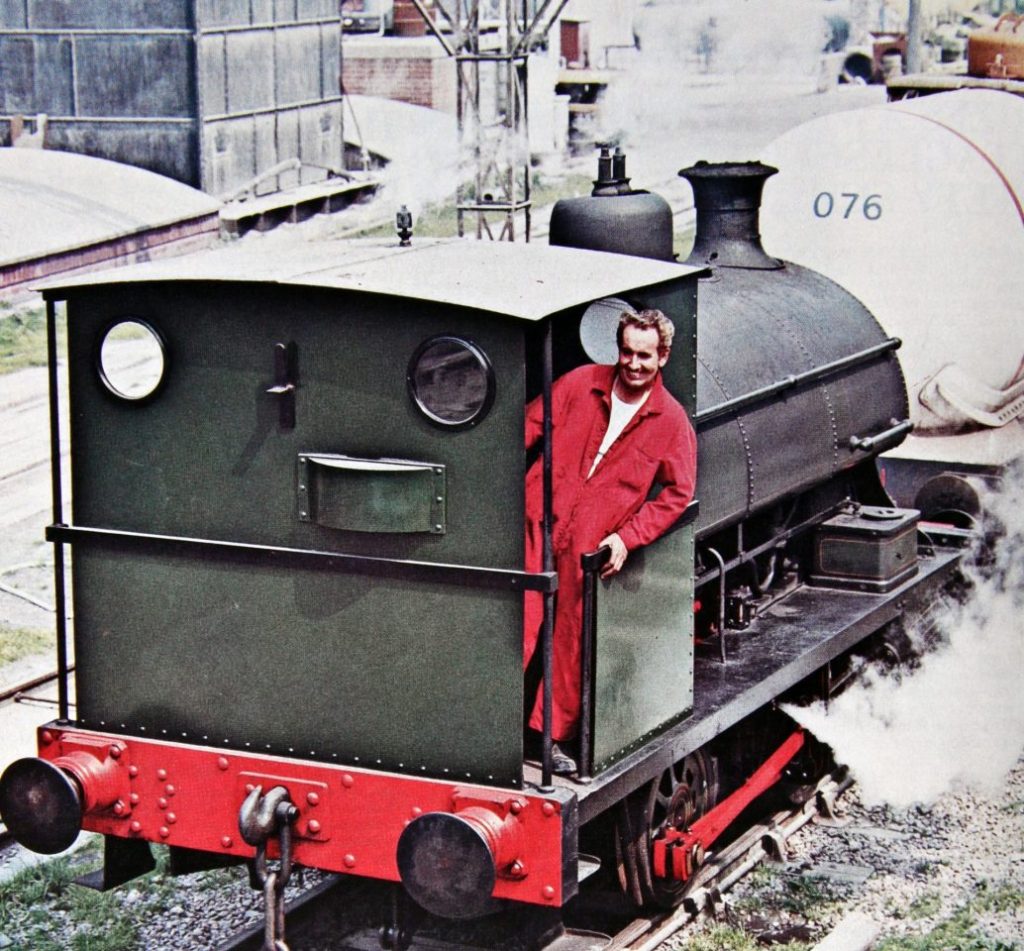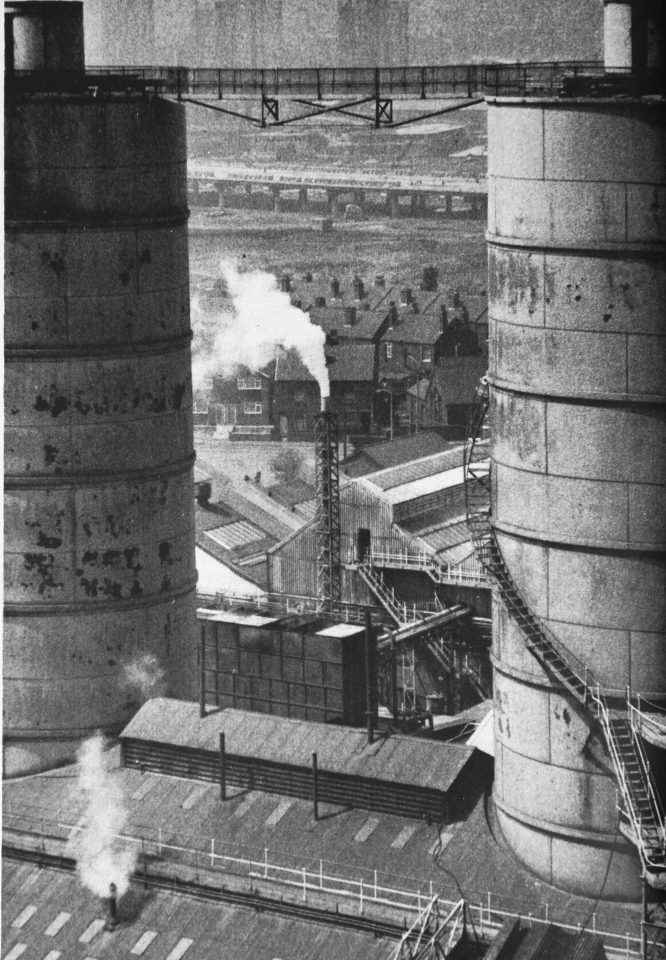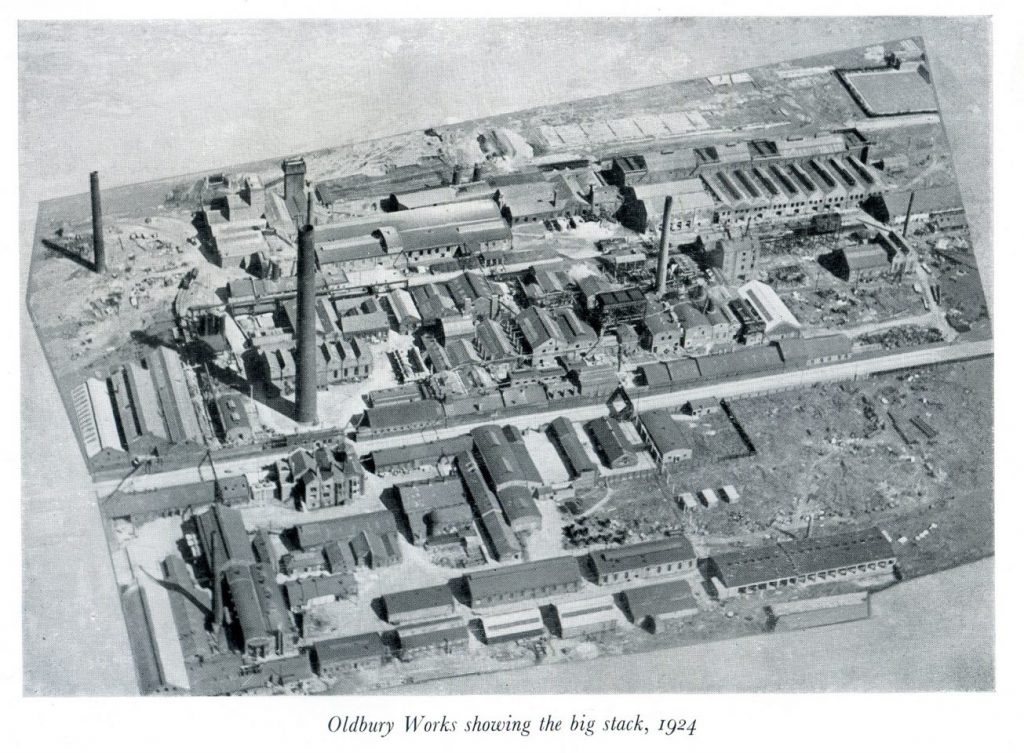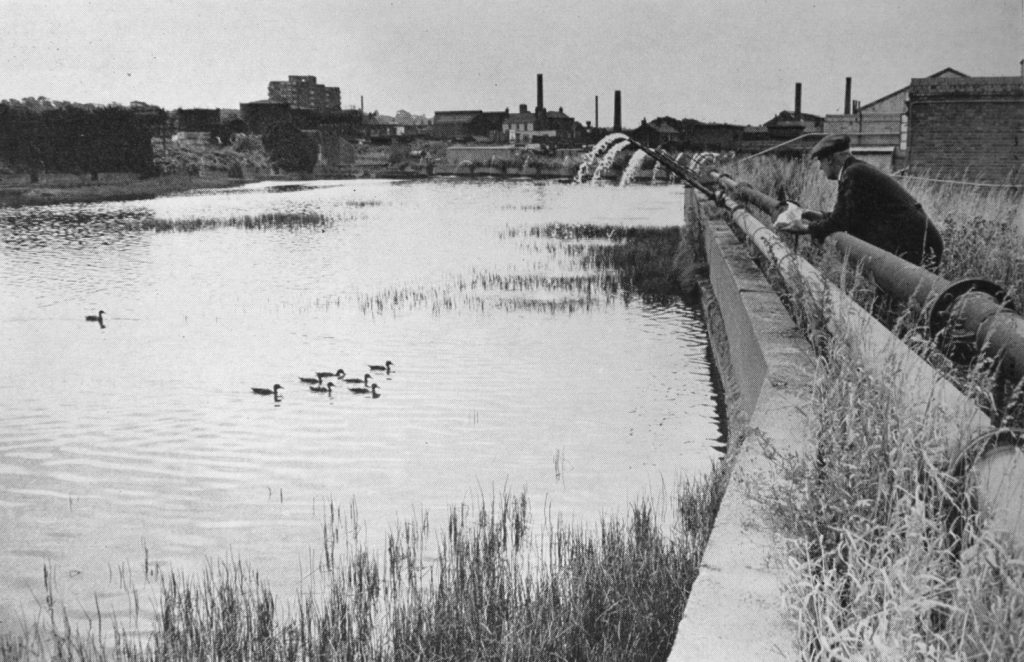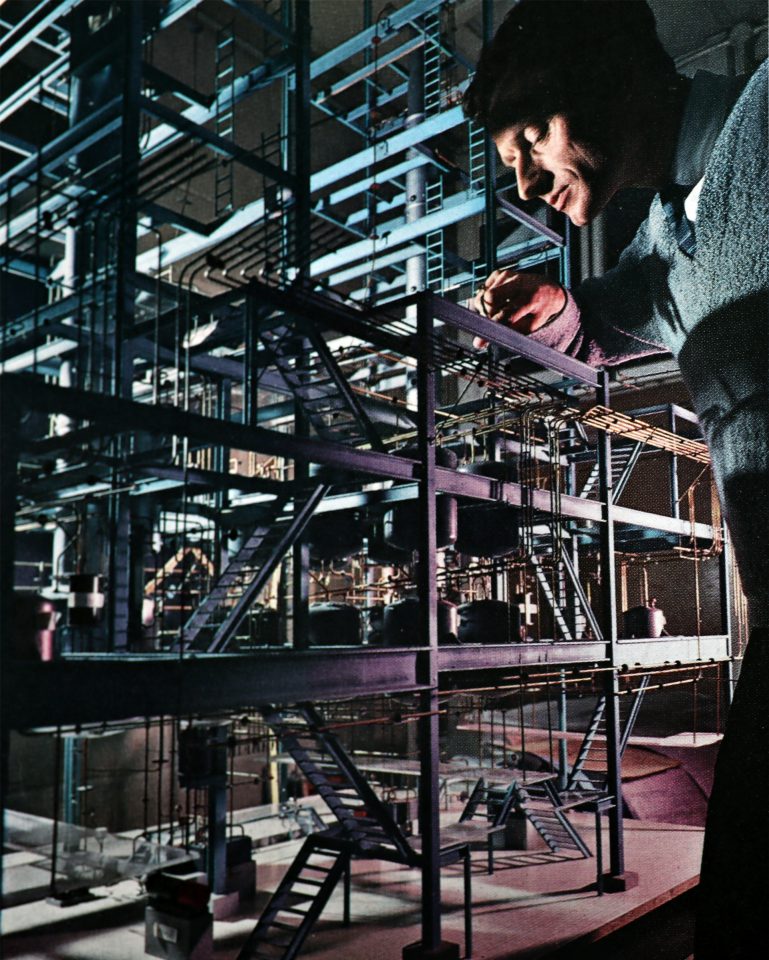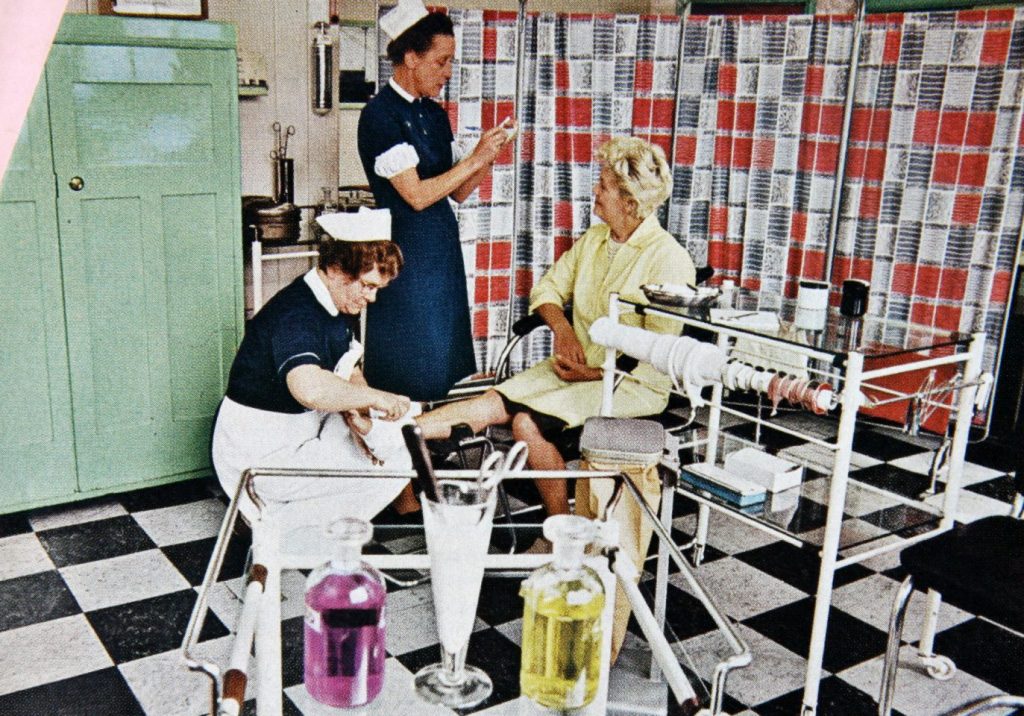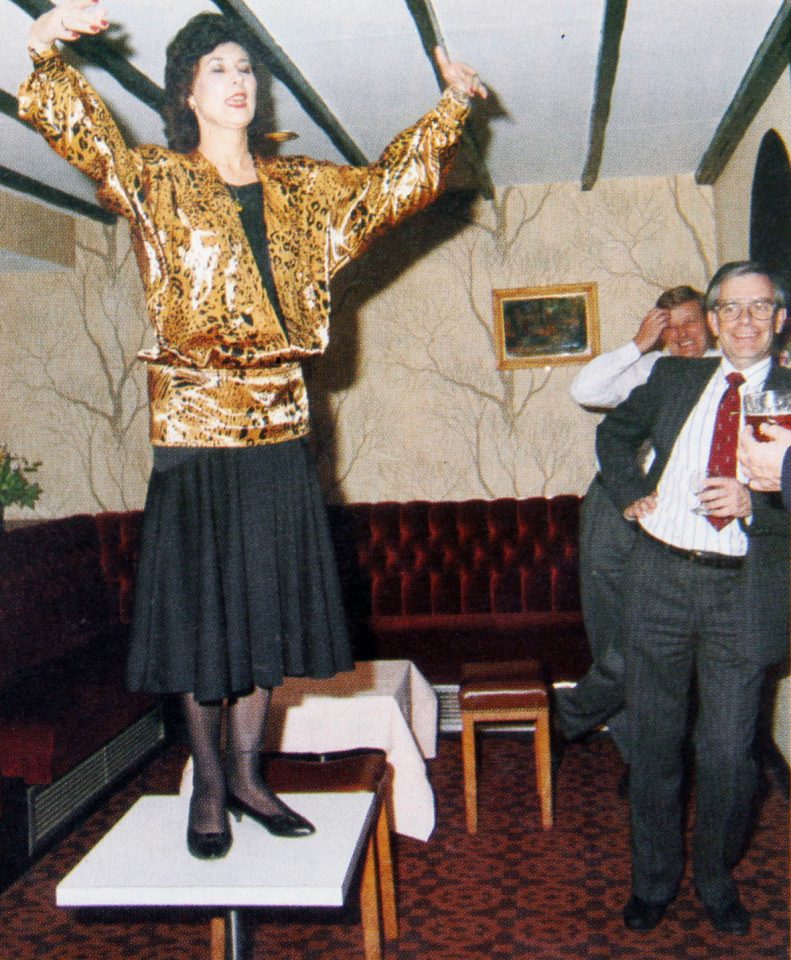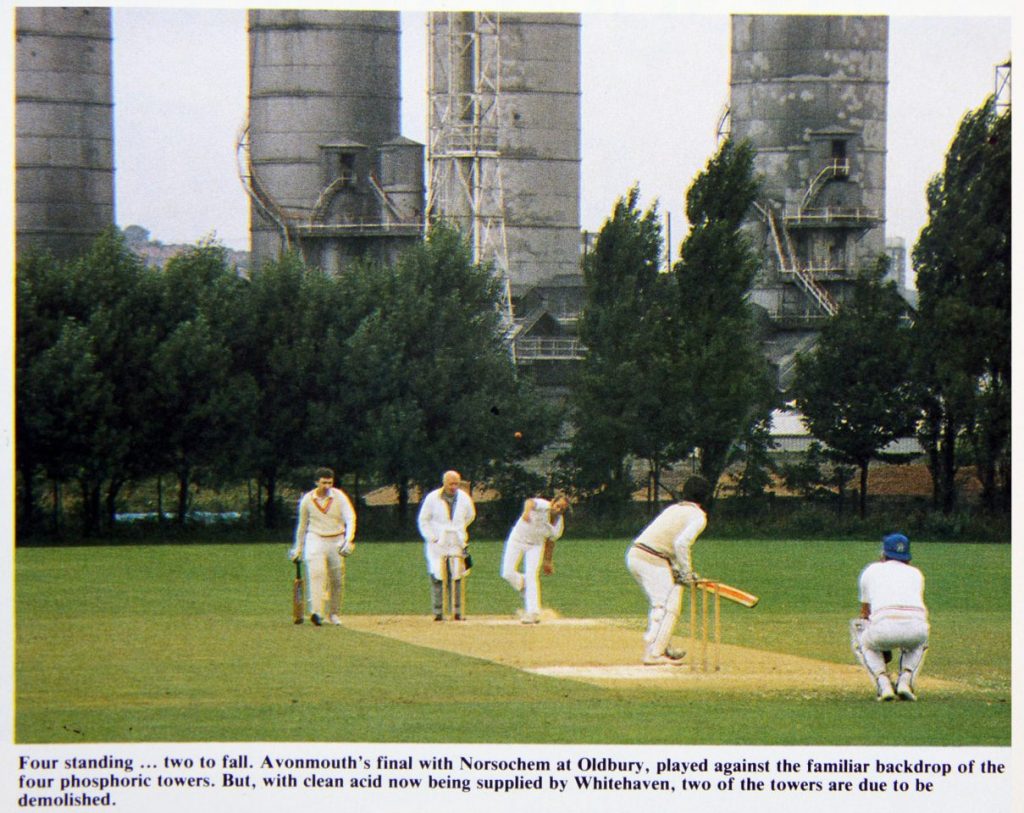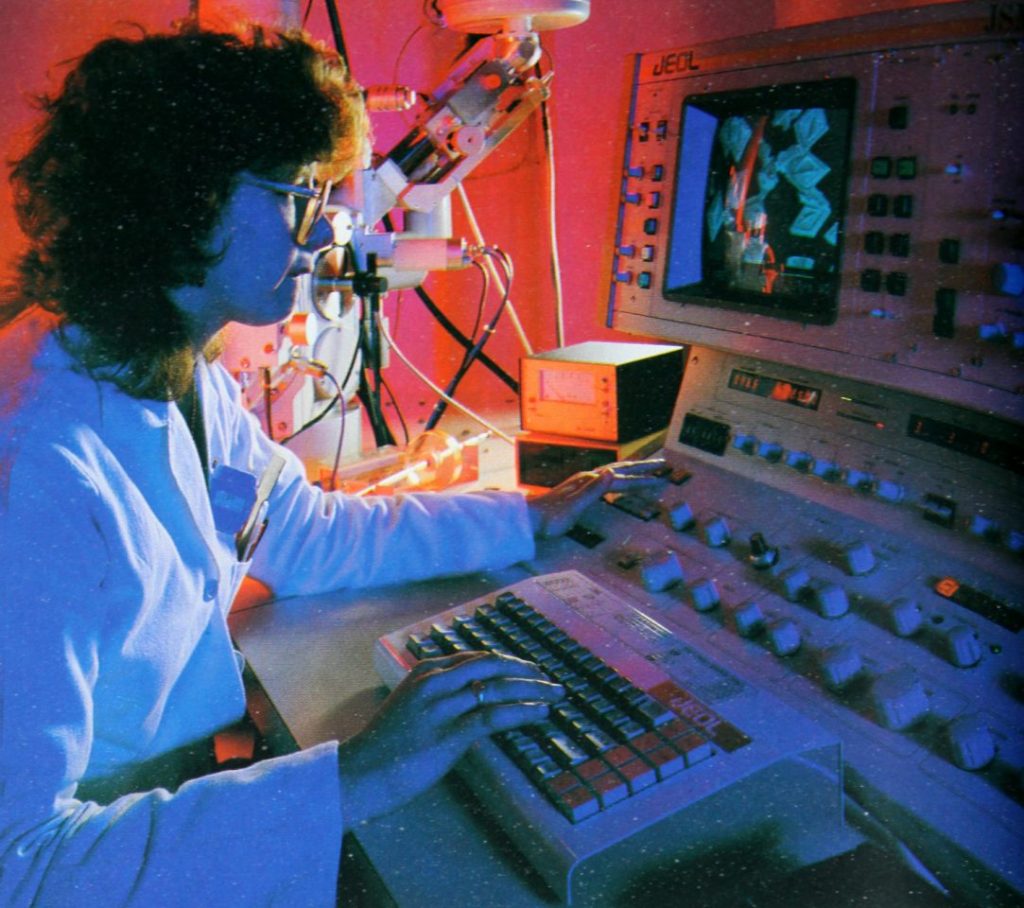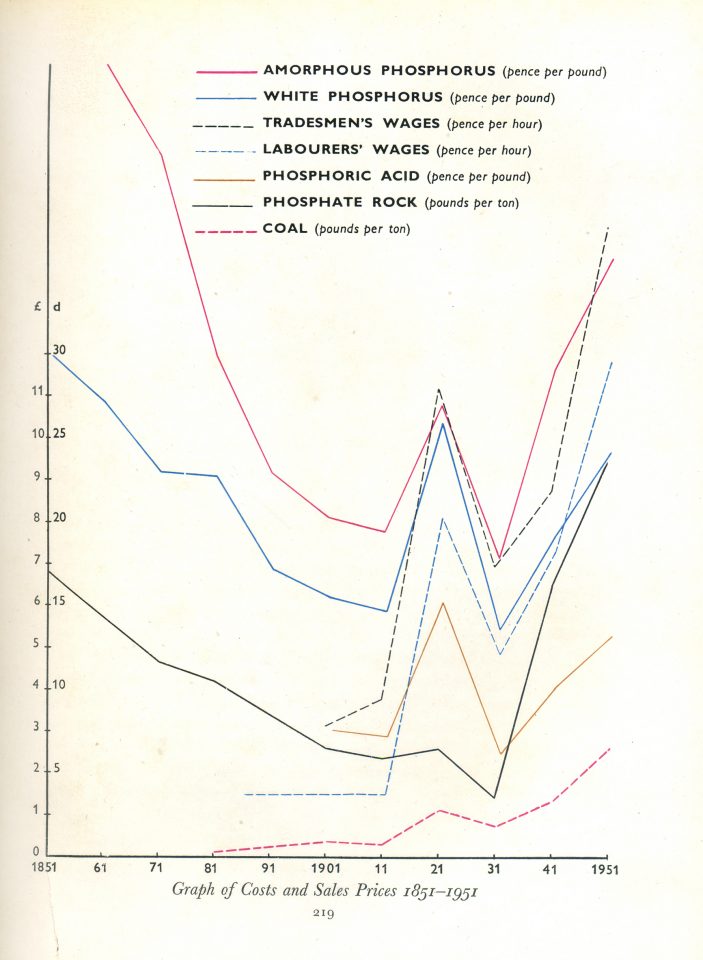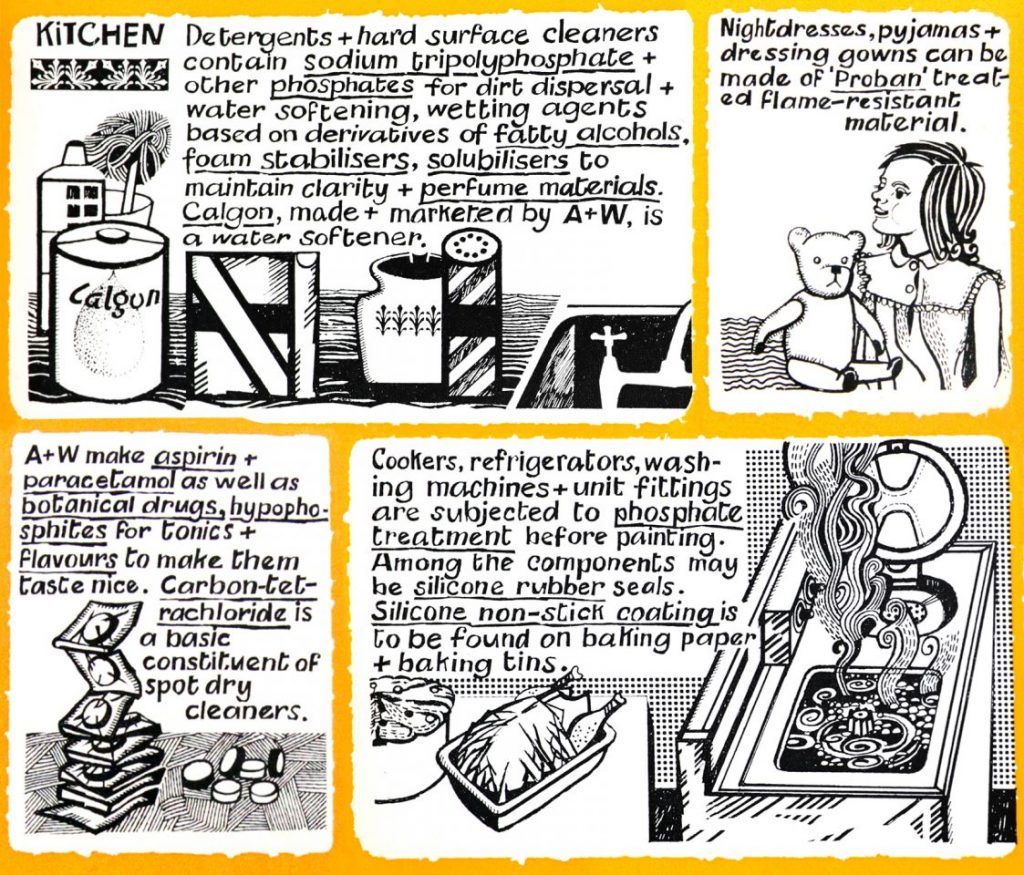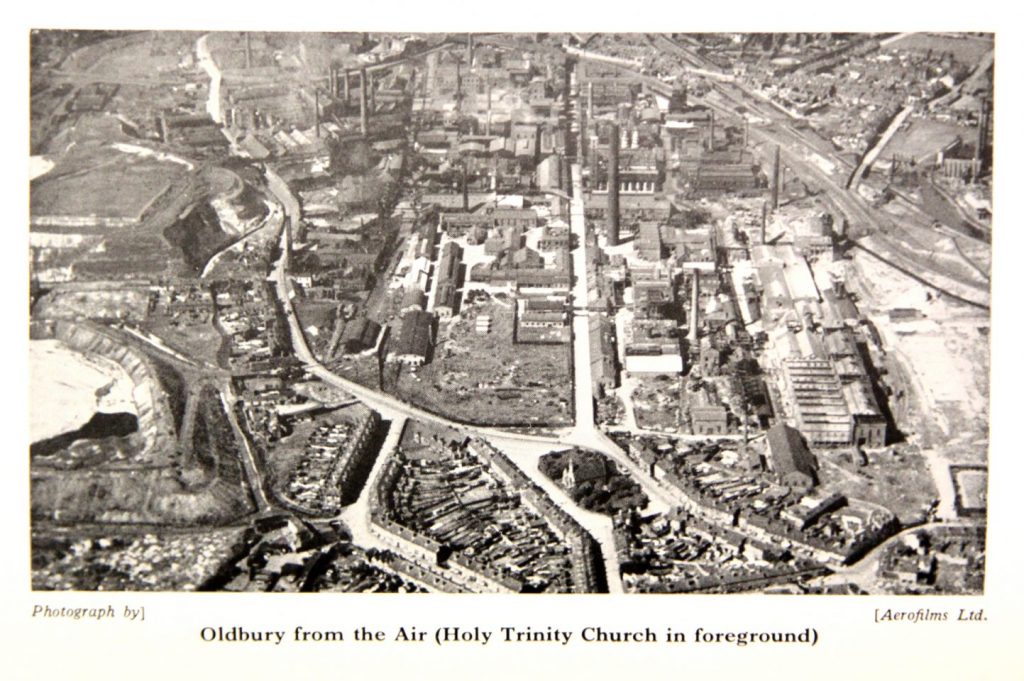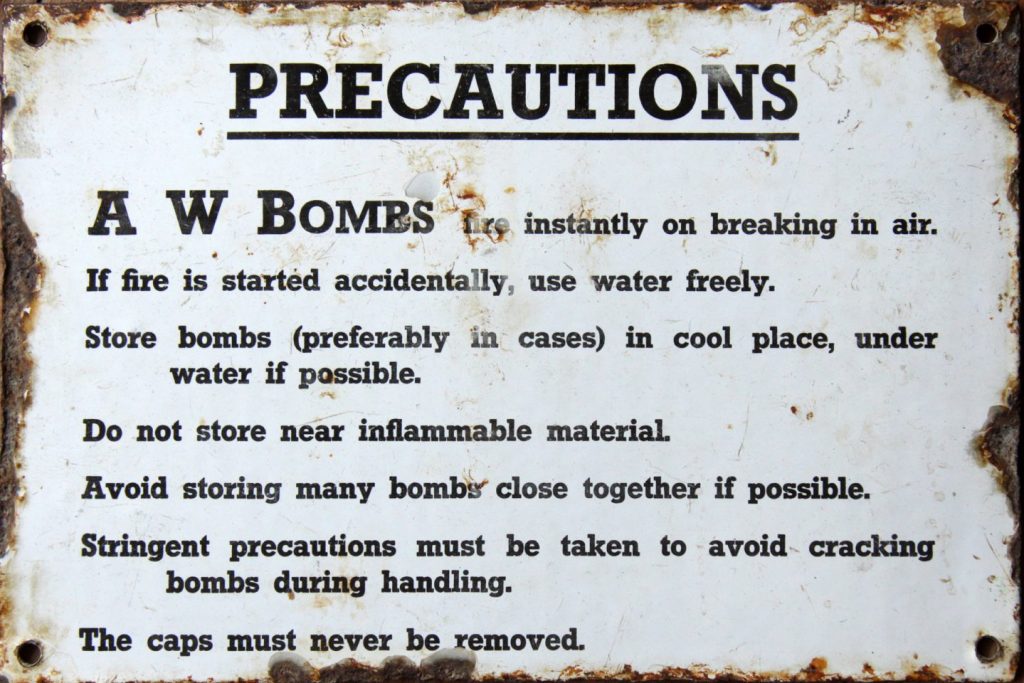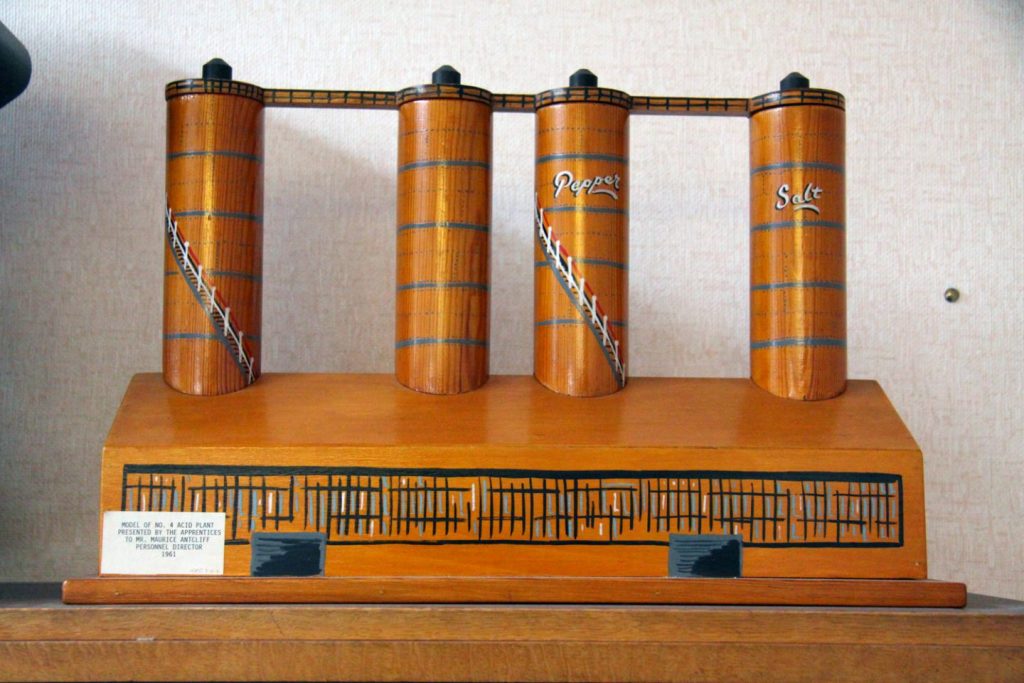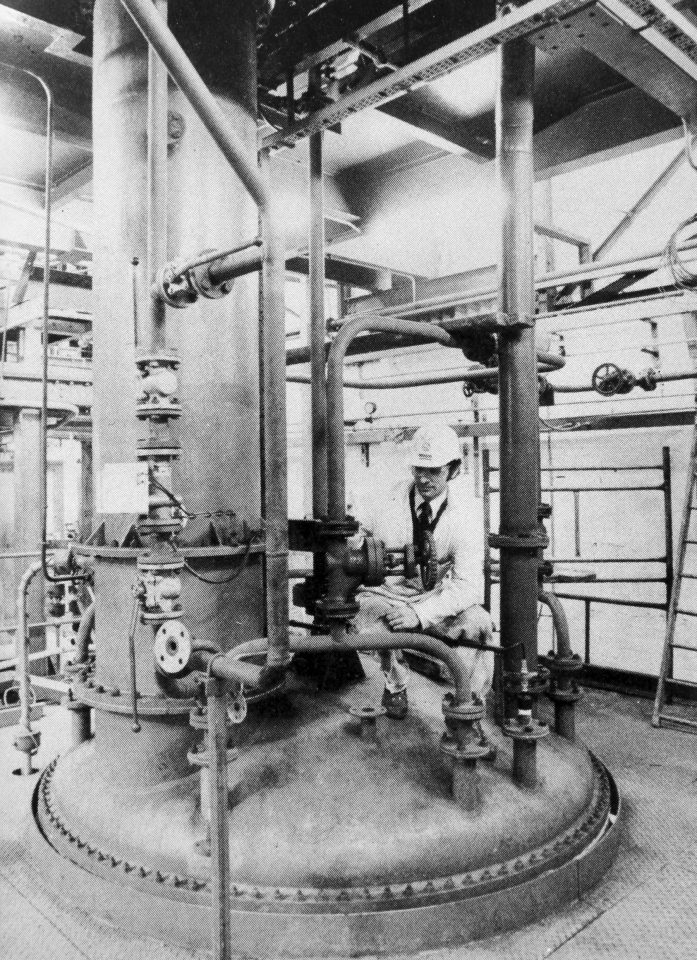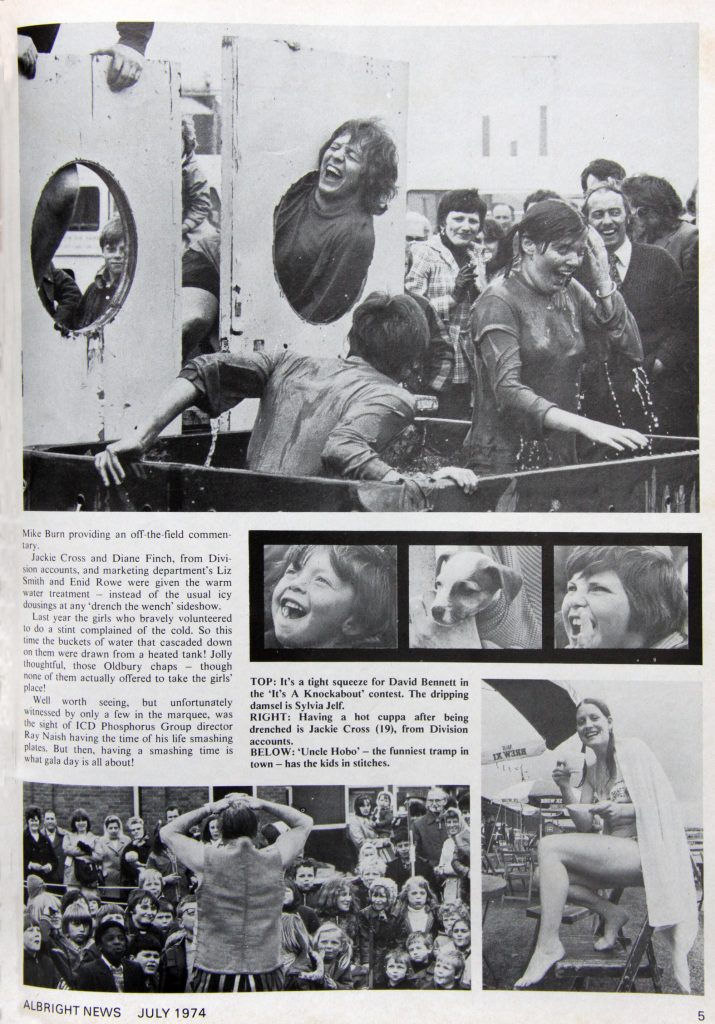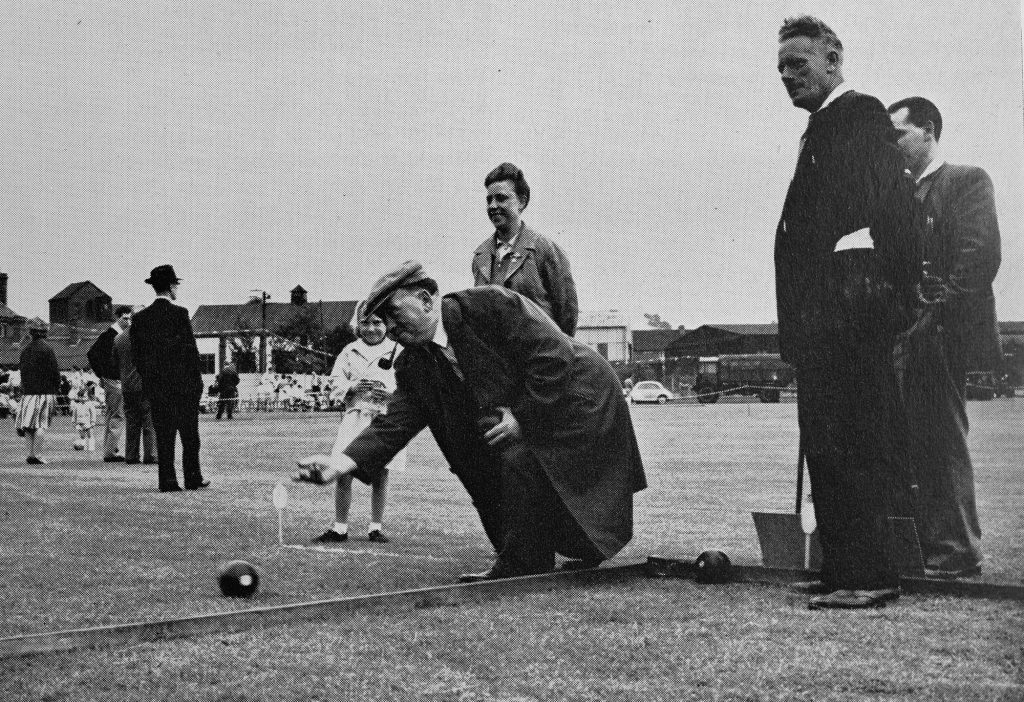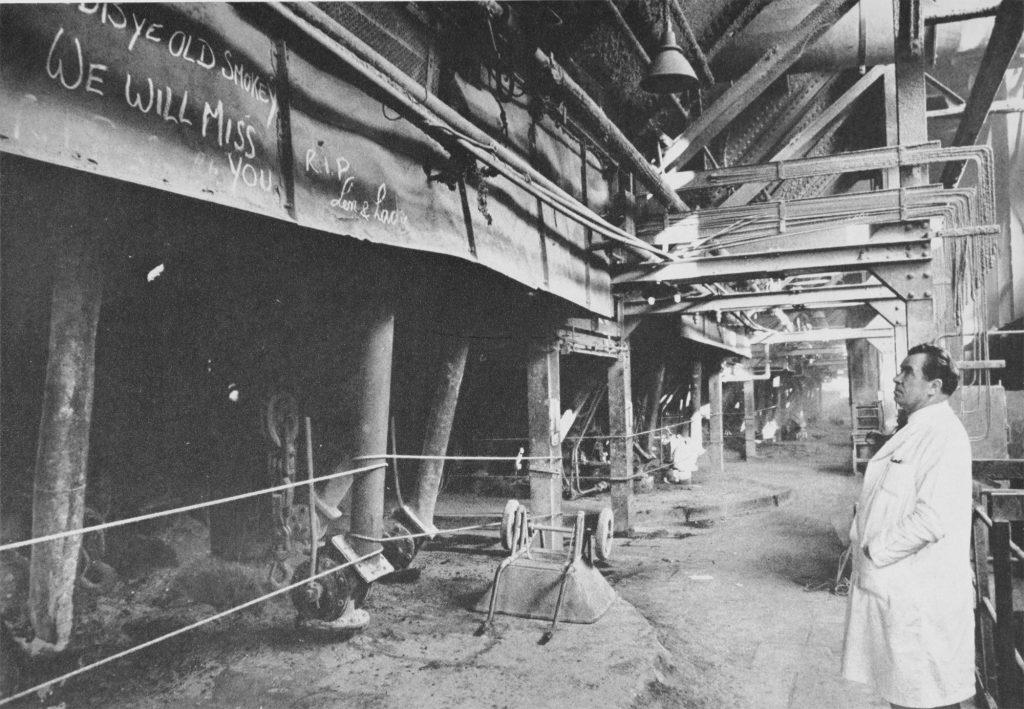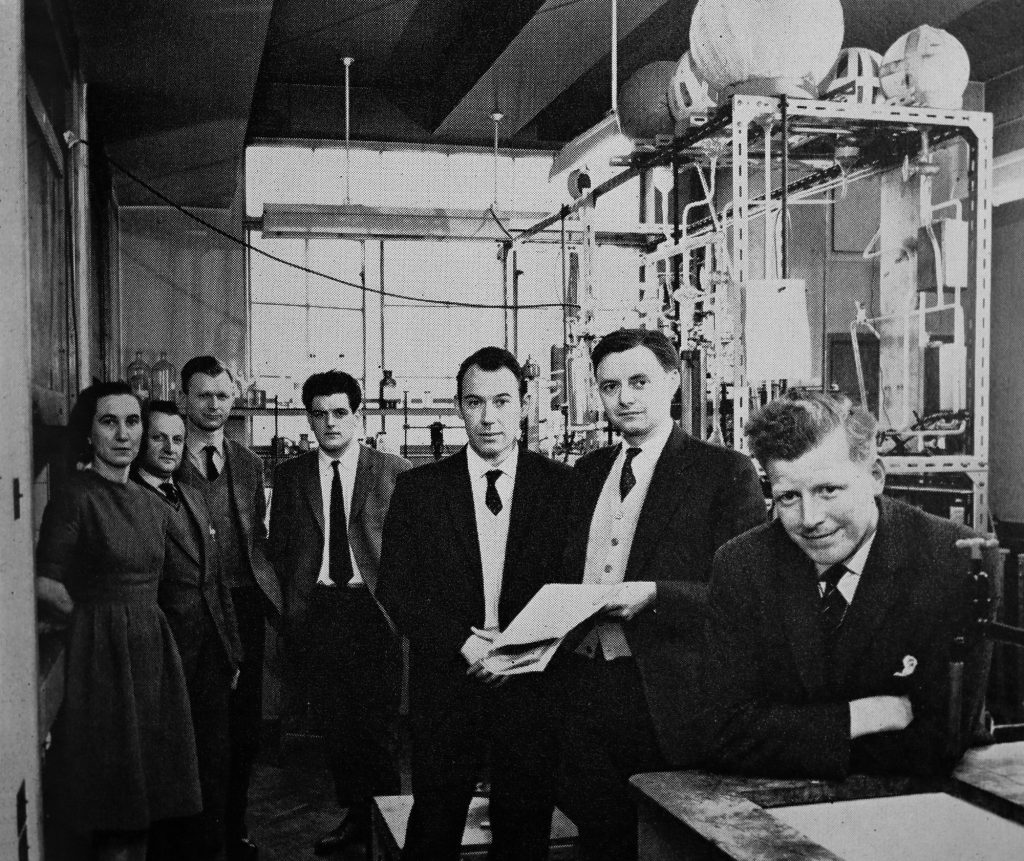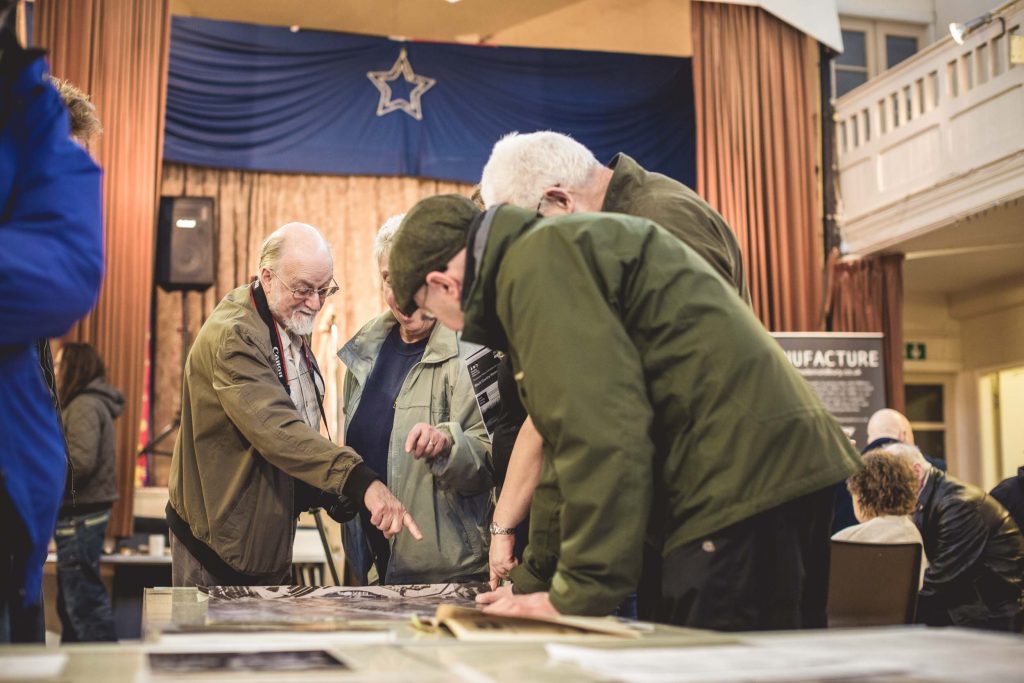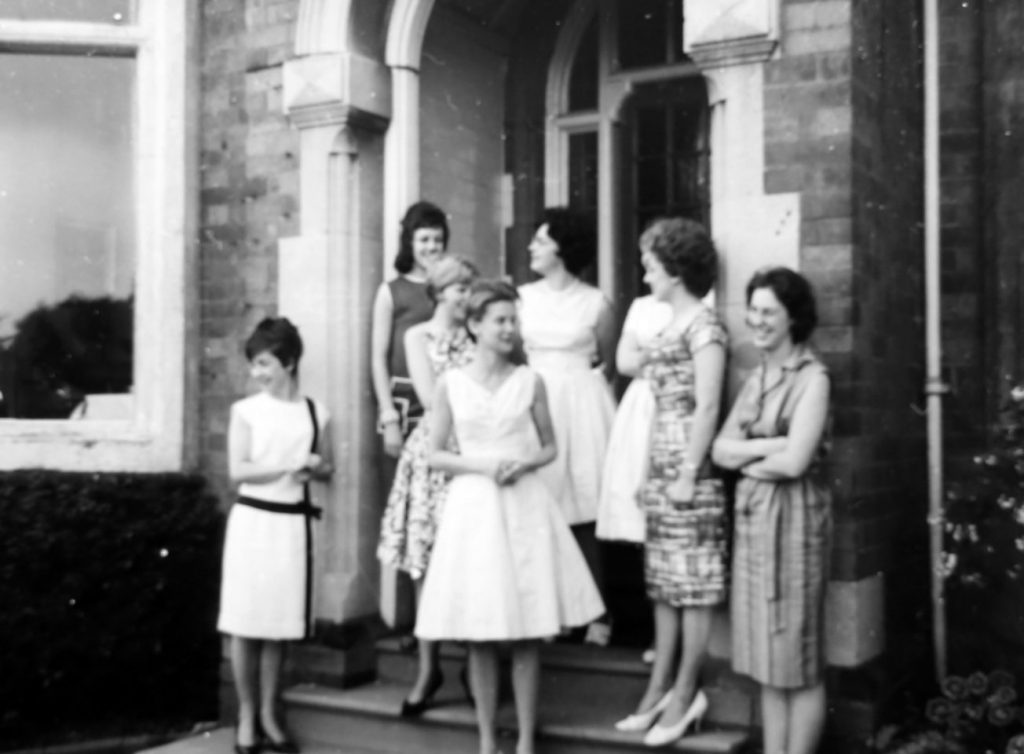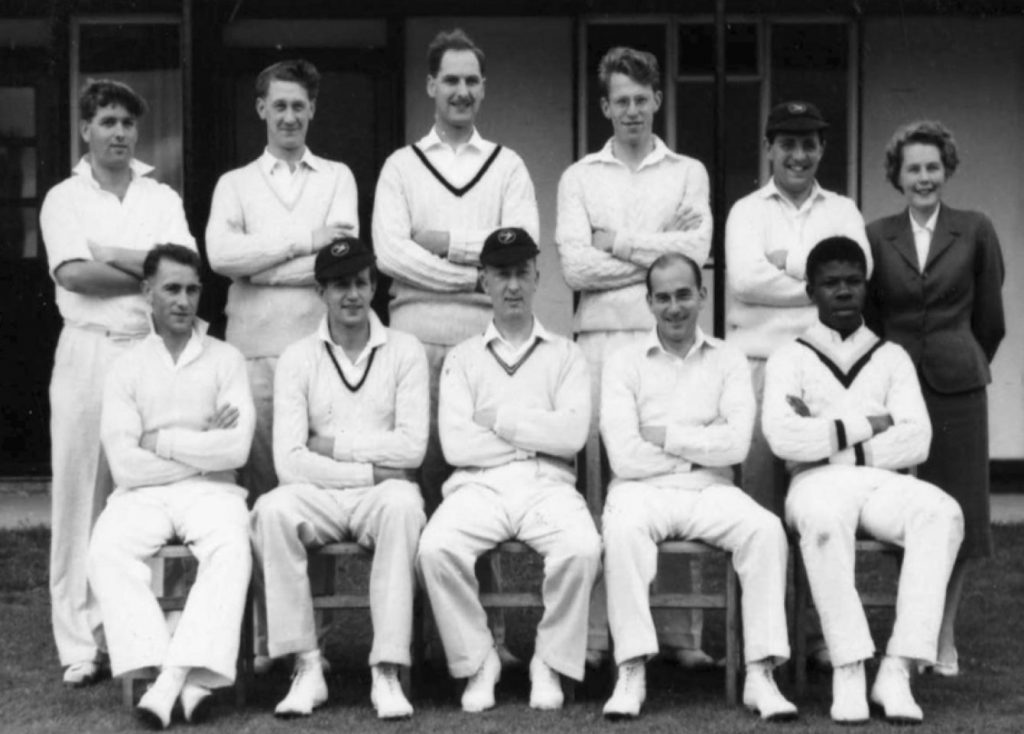Albright & Wilson was founded in 1856 by Arthur Albright for the production of potassium chloride and white phosphorus for the match industry. It was to become one of the largest chemical works in the country. During the First World War it turned its expertise to making phosphorus bombs. Apart from phosphorus, phosphates and other related chemicals, the company produced surfacants, paper pulp bleaching chemicals and process and paper sizing chemicals. It became a supplier to many industries, such as detergents, toiletries, paper, metal finishing, food agrochemicals and textiles. Covering 60 acres of land, the factory is still in operation today, as part of the Solvay chemical group. This site employs some 220 people, producing around 150 products, exporting over half of these products to every continent of the world.
“Holy Trinity School, which was nearly opposite the church, was used as a Sunday School in the mid 1930’s. I remember walking along there as a lad and picking up white, glassy rocks. They fascinated me, because they smelled strange and they glowed when you rubbed them together. It wasn’t until I worked at Albright & Wilson’s years later that I discovered I have been playing with pieces of phosrock.”
– George Higginbotham, Langley & Langley Green Recalled, 1996
In 1947, at the British Industries Fair held at Olympia, London, the company was listed as manufacturing the following: Phosphorus, Phosphoric Acids, Sodium Phosphates, Acid Sodium Pyrophosphate, Tetrasodium Pyrophosphate, Monocalcium Phosphate, Tricalcium Phosphate, Ammonium Phosphates, Sodium Metaphosphate, alkyl Phosphates, Phosphorus Chlorides, Sesquisulphide, Hypophosphites, Carbon Tetrachlorides, Soldium Alginate, Ethyl Silicate.
Some of the remarkable products of Albright & Wilson:
Cola contains a flavoured, carbonated, sweetened and diluted sodium phosphate. Bottle caps or metal cans are treated with a special grade of that acid so it won’t rust through the enamel coating. The glass bottle has been cleaned in a bath containing sodium phosphates.
Amorphous (red) phosphorous goes into making a box of safety matches.
Polyphosphates are used in a wide range of meat products, and phosphates are use din processed cheese, evaporate milk, instant desserts. ice creams.
Cakes, bread and biscuits have leavening agents based on sodium or calcium phosphates.
Phosphine is used as a flame retardent in fabrics, furnishing and bedding.
Sodium tripolyphosphate is used in detergent powders and sodium polyphosphates is used to treat household water supplies. Dicalcium phosphate dihydrate and sodium monofluoride are used in toothpastes. Many pharmaceutical products use phosphorus chlorides ; deodorants contain aluminium chlorhydrate and the way ta.blets effervesce in a glass of water is due to the use of tricalcium phosphate.
Ammonium phosphates are used as flame retardants in wood, paper and wall coverings, for making enamel and intumescent papers, and in food grades for mould culture nutrients, as well as in the production of fluorescent powder coatings for lamps and TV tubes before the advent of LED.
The hydraulic fluids and lubricants used in motor vehicles contain phosphorus pentasulphide and phosphorus chlorides. The metal shells of vehicles have a phosphate deposit to aid the bonding of paint and protect against rusting.
“When we were children we were told that, if the eternal flame at Albright & Wilson’s ever went out, Langley would blow up. I remember as a child of 10 coming over Uncle Ben’s Bridge on my 3-wheeler bike and seeing that it had gone out. I ran into the house screaming. The eternal flame went out three or four times actually, but we’re still here to tell the tale.”
- Mabel Dockett (nee Smith), Langley & Langley Green Recalled, 1996
In October 1970, the company presented ‘a new approach to accident prevention’ at Oldbury: ‘SAFETY IS OUT. TOTAL ENVIRONMENT CONTROL IS IN.’
One of the Outs was threats. Elmer Roberts, manager of the environmental hygiene and safety unit (who had worked in the factory for 25 years making phosphorus) said, ‘If you want people to wear safety glasses you don’t just buy a pile and hand them out with threats of dismissal if they are not used. You find out what they think of safety glasses – what their preferences and dislikes are – and why. You get a variety of types and invite the prospective wearers to try them on and comment on their efficiency – and style.’
'Daft gear' was also out. John Barnett was one of the factory’s long service lorry drivers who trialed a new flame and chemical resistant uniform. The outfit was criticised for lack of a zip fastener instead of buttons, a badly shaped back to the cap and he said preferred a different fastening round the waist. His fellow drivers also preferred green instead of the navy blue used in the trial.
Ins included: pride, reason and psychology. Dr J.S. Pedder, a manager with division production services, said that ‘If hard hats are not worn despite instructions, then there must be a reason. Nobody in industry who is in his right mind will deliberately flout a safety order just for the sake of it.’ The reason might be that the hats are ill fitting, too hot, they obstruct vision or they are impractical (water running off and down the neck while working in steamy areas), simply that the hat looks ‘silly on the wearer’. The company instigated ‘safety auditing’, which was not simply a cursory inspection, but a detailed examination of shortcomings, observations recorded and the audit repeated a number of times. The safety audit reported on everything.
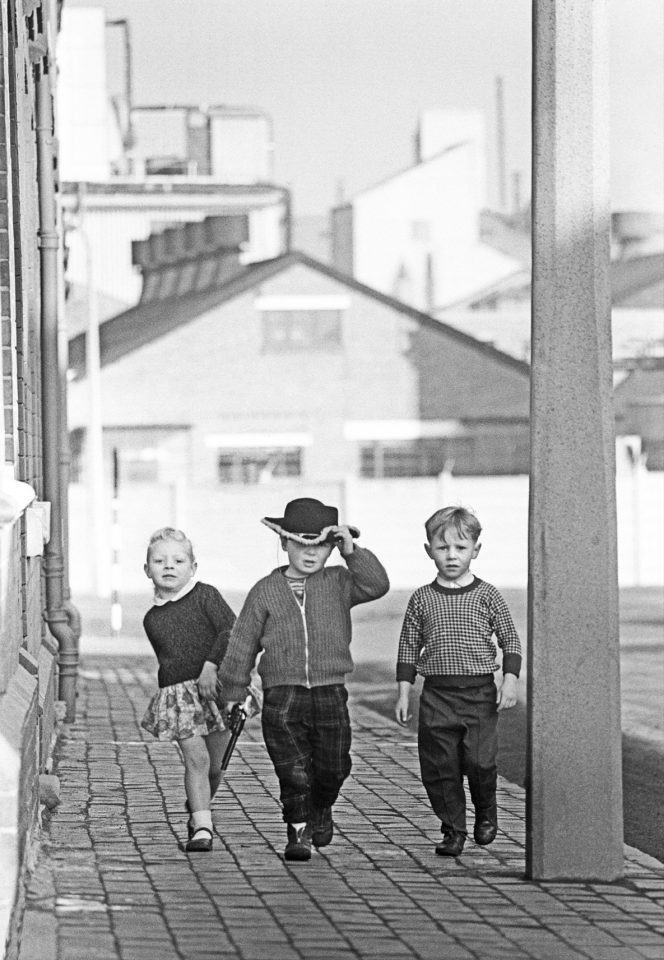
Given that the manufacture of chemicals at the site required the use of raw materials which had to be handled with the greatest care, over the years the factory has undertaken many initiatives placing a high emphasis on safety, health and environment training. Here’s an extract from a 1986 safety video. ‘Safety- the Vital Factor’, produced by Swanlind Television, was used to reassure the local community that appropriate measures were in hand in the event of an accident at the site.
A significant aspect of the larger factories in Oldbury was the offer of social and recreational programmed for their workers. Albright News in 1964 reported on their Gala Day in June:
‘The somewhat heavy sky kept a number of people at home, but well over 450 turned up to what proved an enjoyable function. The children pushed tennis balls with their noses, ate ice-cream and went for rides on the tractor; 40 large gentlemen pulled away all afternoon in an exciting tug-of-war, 16 side shows were well-patronised (one of the club’s auditors looking after the ‘china smasher’ said he hadn’t worked so hard in years). Babies stuck out a solemn tongue at equally solemn judges, and the young men gawped at 30 very attractive young ladies demonstrating how to keep fit. An even fitter crowd, the army, turned up with anti-aircraft guns and a radar scanner big enough for a battleship, and remarkable gentleman who called himself ‘Tarzan, the Maltese Wonder’ ate fire then relaxed on a bed of nails with six enormous men forming his coverlet. Late in the afternoon Mrs Antcliff presented prizes to winners of the various competitions and Stan Greenfield, the Club’s Wine Society Food Secretary, spent a hot afternoon dispensing somewhat charred, but very acceptable, barbecued hot dogs. At six’o’clock the Secretary stared moodily into a glass of bitter. Something had gone badly wrong – there had been no complaints.’
Mike Burn was the full-time Secretary of A&W Oldbury Recreation Club for many years. The original caption of the photograph above was: ‘Mike Burn makes a dramatic entrance with a haggis at a recent Wine Society whiskey tasting session.’ He was described as ‘an ebullient fellow with extrovert tendencies; he has enthusiasm galore and great organizing ability. To some folk in the works he’s a bit of an oddball – ‘he goes on holidays where they do nothing but play music and sing madrigals’. To make matters worse his full name is Michael Umlandt Cameron-Burn; his ancestry is a mixture of Scots, English, German.’ In 1964, the company gave him a budget of £4000 for social activities, supplemented by membership fees from some 1400 members and income from sources such the one-armed bandits. There were some 70 works notice boards keeping members in touch with activities, as well as a weekly newsletter.
